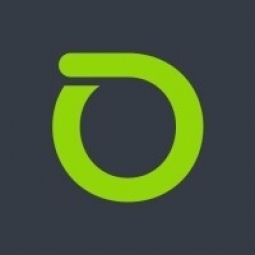公司规模
Large Corporate
地区
- America
国家
- United States
产品
- nGeniusONE® Service Assurance platform
- NETSCOUT® Certified InfiniStreamNG® software appliances
- nGenius® Packet Flow Operating System
- nGenius®PULSE server with nPoint sensors
技术栈
- Citrix VDI
- Oracle services
- Cisco Unified Computing System (UCS)
- VoIP
实施规模
- Enterprise-wide Deployment
影响指标
- Customer Satisfaction
- Productivity Improvements
- Cost Savings
技术
- 平台即服务 (PaaS) - 连接平台
- 平台即服务 (PaaS) - 设备管理平台
适用行业
- 金融与保险
适用功能
- 商业运营
- 人力资源
用例
- 远程协作
- 远程资产管理
- 远程控制
服务
- 系统集成
- 云规划/设计/实施服务
关于客户
该控股公司持有一家拥有近 1.5 亿全球客户的全球银行机构的运营控制权。该公司的集中式信息技术 (IT) 运营团队负责领导数字创新,这些创新在运营上既有利于控股公司,也有利于其独立的银行机构业务运营。通过这种方式,这些业务实体可以从优化的 IT 运营投资和人力资源中受益,包括共享某些数据中心运营。控股公司和银行机构在尽可能利用集中式 IT 效率来支持自己的技术运营的同时,拥有独立的网络基础设施、业务服务和资本支出 (CapEx) 流程,所有这些偶尔会促使他们按顺序而不是同时采用通用供应商技术平台。
挑战
控股公司和银行机构虽然受益于集中式 IT 效率,但拥有独立的网络基础设施、业务服务和资本支出 (CapEx) 流程。这有时会促使他们按顺序而非同时采用通用供应商技术平台。在家办公 (WFH) 员工面临的挑战包括访问 Citrix 虚拟桌面基础设施 (VDI) 并确保其性能可靠,以便安全地使用业务应用程序、Oracle 服务以及 VoIP 和 Cisco 统一计算系统 (UCS) 服务质量。尽管控股公司环境中已部署供应商故障排除工具集,但这些问题仍然基本未得到解决。这让员工和负责故障排除和平均修复时间 (MTTR) 功能的 IT 资源都感到沮丧,因为他们无法通过单一窗口查看这些解决方案在家庭办公环境中的运行情况。
解决方案
IT 领导团队再次依靠 NETSCOUT 来确保该项目的成功,利用公司的主题专家来帮助设计解决方案,以充分利用他们早期的服务保证技术投资。通过这种方式,IT 领导层建议为新数据中心采用基于软件的智能可视性方法,并使用已部署的 nGeniusONE 和 nGeniusPULSE 分析(之前由公司的银行机构购买),这使该项目符合采购团队批准所需的成本控制指南。在将确保服务性能所必需的可视性引入新数据中心运营环境时,IT 运营部门部署了 NETSCOUT 认证的 ISNG 软件设备(支持 40GB 网络速度)和基于软件的 nGenius PFOS 数据包代理技术解决方案。ISNG 设备使用集成的自适应服务智能技术从南北网络数据包流量中实时生成智能数据,然后 IT 运营部门使用这些数据来改善整个控股公司业务的网络、应用程序和业务服务交付。
运营影响

Case Study missing?
Start adding your own!
Register with your work email and create a new case study profile for your business.
相关案例.

Case Study
Real-time In-vehicle Monitoring
The telematic solution provides this vital premium-adjusting information. The solution also helps detect and deter vehicle or trailer theft – as soon as a theft occurs, monitoring personnel can alert the appropriate authorities, providing an exact location.“With more and more insurance companies and major fleet operators interested in monitoring driver behaviour on the grounds of road safety, efficient logistics and costs, the market for this type of device and associated e-business services is growing rapidly within Italy and the rest of Europe,” says Franco.“The insurance companies are especially interested in the pay-per-use and pay-as-you-drive applications while other organisations employ the technology for road user charging.”“One million vehicles in Italy currently carry such devices and forecasts indicate that the European market will increase tenfold by 2014.However, for our technology to work effectively, we needed a highly reliable wireless data network to carry the information between the vehicles and monitoring stations.”

Case Study
Safety First with Folksam
The competitiveness of the car insurance market is driving UBI growth as a means for insurance companies to differentiate their customer propositions as well as improving operational efficiency. An insurance model - usage-based insurance ("UBI") - offers possibilities for insurers to do more efficient market segmentation and accurate risk assessment and pricing. Insurers require an IoT solution for the purpose of data collection and performance analysis

Case Study
Smooth Transition to Energy Savings
The building was equipped with four end-of-life Trane water cooled chillers, located in the basement. Johnson Controls installed four York water cooled centrifugal chillers with unit mounted variable speed drives and a total installed cooling capacity of 6,8 MW. Each chiller has a capacity of 1,6 MW (variable to 1.9MW depending upon condenser water temperatures). Johnson Controls needed to design the equipment in such way that it would fit the dimensional constraints of the existing plant area and plant access route but also the specific performance requirements of the client. Morgan Stanley required the chiller plant to match the building load profile, turn down to match the low load requirement when needed and provide an improvement in the Energy Efficiency Ratio across the entire operating range. Other requirements were a reduction in the chiller noise level to improve the working environment in the plant room and a wide operating envelope coupled with intelligent controls to allow possible variation in both flow rate and temperature. The latter was needed to leverage increased capacity from a reduced number of machines during the different installation phases and allow future enhancement to a variable primary flow system.

Case Study
Automated Pallet Labeling Solution for SPR Packaging
SPR Packaging, an American supplier of packaging solutions, was in search of an automated pallet labeling solution that could meet their immediate and future needs. They aimed to equip their lines with automatic printer applicators, but also required a solution that could interface with their accounting software. The challenge was to find a system that could read a 2D code on pallets at the stretch wrapper, track the pallet, and flag any pallets with unread barcodes for inspection. The pallets could be single or double stacked, and the system needed to be able to differentiate between the two. SPR Packaging sought a system integrator with extensive experience in advanced printing and tracking solutions to provide a complete traceability system.

Case Study
Transforming insurance pricing while improving driver safety
The Internet of Things (IoT) is revolutionizing the car insurance industry on a scale not seen since the introduction of the car itself. For decades, premiums have been calculated using proxy-based risk assessment models and historical data. Today, a growing number of innovative companies such as Quebec-based Industrielle Alliance are moving to usage-based insurance (UBI) models, driven by the advancement of telematics technologies and smart tracking devices.
Case Study
Enhancing Security and Compliance in Remitly's Global Money Transfer Service with Fastly
Remitly, an online remittance service, was faced with the challenge of securing its proprietary global transfer network. The company needed a security solution that could meet PCI requirements and protect customers' sensitive transactions through its mobile application. The solution had to be capable of defending against new and emerging attack types without impacting performance. Remitly also had to deal with irregular traffic patterns, such as a sudden spike in account transfers from a small network segment on the Pacific coastline of South America. The company needed to determine in real time whether such traffic indicated an attack or valid requests. A traditional web application firewall (WAF) would not be able to distinguish this traffic, potentially leading to customer frustration if the IP was blacklisted.







